8. Watchmen (2009)
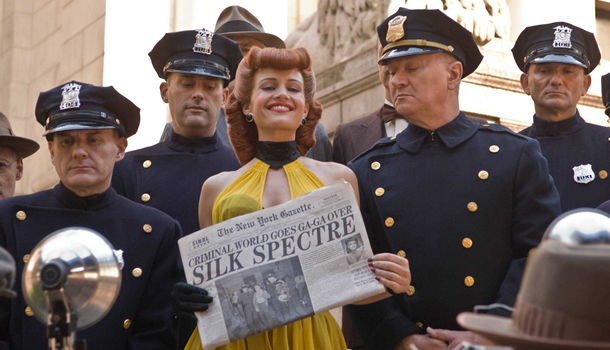
Zack Snyder’s polarising superhero film is underrated, to say the least. It’s the closest thing to the perfect Alan Moore adaptation that we’re ever likely to see. To this day, it’s a unique superhero film that stands apart from the rest.
Before we get to that amazing title sequence through the changing times of an era that lets everyone know that the film takes place in an alternative universe (where Nixon is president for longer than two terms, yikes!), we get to see exactly how “tonight, a comedian died in New York.”
Spending a quite late night at home in his nightgown with a cup of coffee and cigar, the Comedian switches through TV channels until he gets to one that has Nat King Cole’s classic “Unforgettable” playing. An uninvited guest shows up, and we have a fight on our hands.
Everything is pitch perfect in this scene from the choreography, staging, lighting, and Jeffrey Dean Morgan’s smug performance. Having “Unforgettable” playing over the action is the cherry on top that elevates it to timelessness. Hands down the best scene Snyder has ever shot, and a fresh way to open a superhero film.
7. There Will Be Blood (2007)
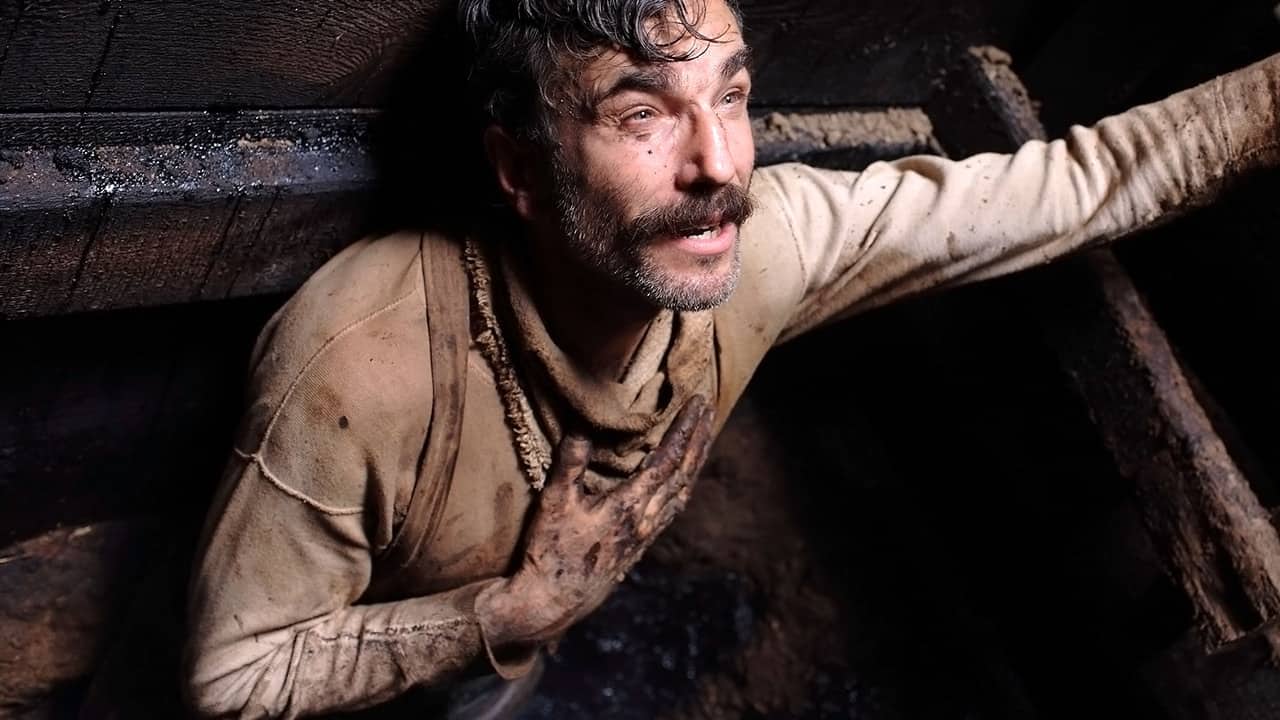
Paul Thomas Anderson opens his modern epic like a horror film helped by Jonny Greenwood’s haunting score that foreshadows the darkness in man that’s to follow. Not a single word is spoken for just over 10 minutes, and in those minutes we watch Daniel Plainview (Daniel Day-Lewis) literally build his empire from humble beginnings.
Plainview is first introduced alone in the wild, determinedly mining for ore in a pit. After breaking his legs, he drags himself (for who knows how long) to an assay office to stake his claim. A few years later he discovers oil and establishes a drilling company. He then adopts a baby from a deceased worker to help sell his company as family-run.
In just that dialogue-free opening, we see the ambition, hunger, and determination of Plainview. We’re right there with him in the dust and pits as he claws his way to riches one step at a time. We feel like we know and understand Plainview through the silence, only to find out we don’t know him at all.
It’s always risky opening a film in this manner where a character’s growth over the years is presented in snapshots to set up their background, and with no dialogue nonetheless. But Anderson’s poetic imagery starts off this epic odyssey in a mesmerizing way. We still have no idea who Plainview is and where he came from, but we bear witness that this is a self-made man, and by the time he does finally speak, it’s all about business.
6. The Dark Knight (2008)
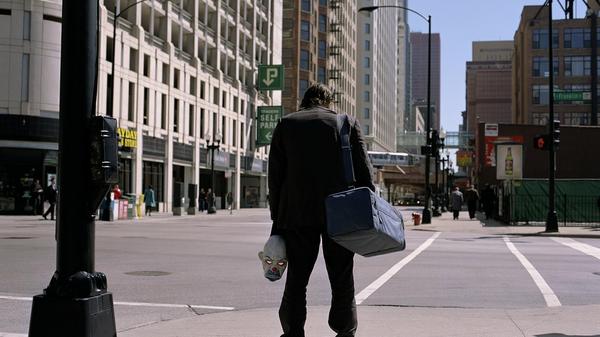
Sometimes all you need is the opening scene to know if the film you just started watching will be good or not. “The Dark Knight” tells us immediately that you’re about to watch a modern classic. Christopher Nolan wastes no time in kicking off the film with the introduction of one of the most celebrated comic book villains of all time.
The Joker Gang (if you’d call them that, since they do each other in one after the other and are never to be seen again) pull off a bank robbery that reminds you immediately what type of superhero film you’re watching. After a number of sequences showing us that these men are professionals, the Joker is finally revealed. And everyone who doubted whether Heath Ledger would be worthy of standing next to Jack Nicholson’s shadow is immediately silenced.
As great as “Batman Begins” was, “The Dark Knight” firmly established Nolan as the new box office king. He grew fully into big-budget filmmaking here. Unlike certain parts of the former film that was a bit shaky, here, everything flows like an epic opera. Lee Smith’s editing in this opening is so effortless and so precise that it feels bigger than it really is.
5. Antichrist (2009)
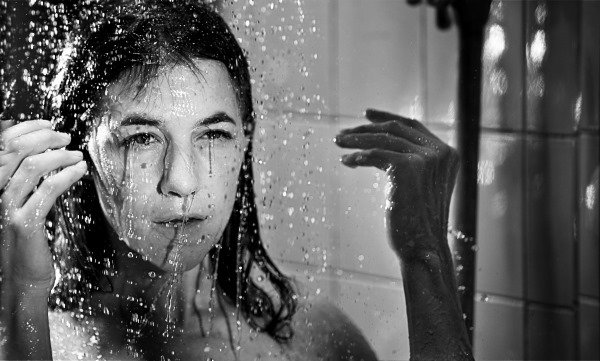
The first film in Lars von Trier’s Depression Trilogy affirms in its opening scene the contrasting themes of sadness and beauty that would run throughout the trilogy. The world seems to slow down in times of pure joy or pure tragedy, which is wonderfully captured in the prologues of the films in the series.
“Antichrist” opens with some engrossing and explicit visual imagery of a married couple passionately making love, while their toddler innocently climbs up a window and falls to his death. Set in slow motion to the aria “Lascia ch’io pianga” from Handel’s opera Rinaldo, this prologue features some of the director’s most beautiful and iconic imagery.
Soon after this opening, von Trier dives headfirst into the misery of a couple dealing with the after-effects of losing a child in his trademark visual grit. For that, the opening overtly achieves its desired effect in contrasting the rest of the film. It invites us cautiously into its story with a stylized opening before pulling the rug out from under our feet, just like it does for its characters.
Passionate lovemaking soon turns into sadomasochistic sex, the innocence of pleasure into explicit grief and violence. Even if you hate the film, you’ll be enticed by the opening, one way or another.
4. Children of Men (2006)
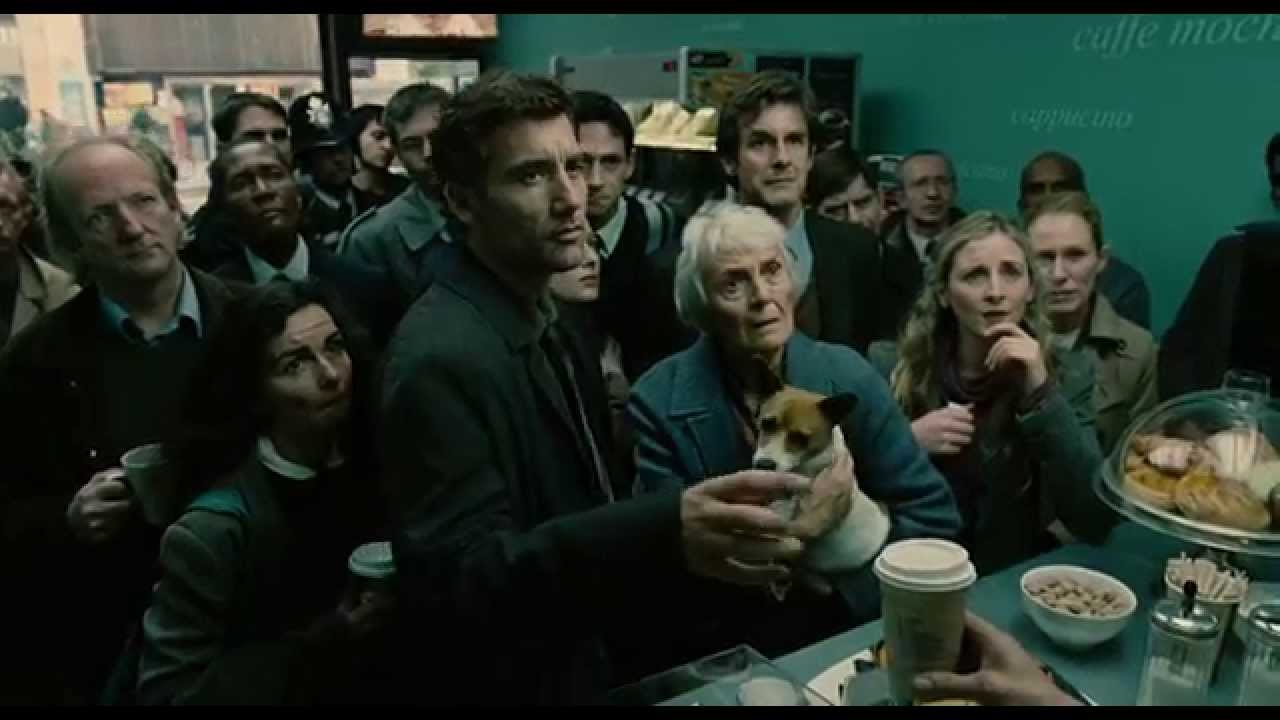
“Children of Men” wastes no time in setting up its story, its world, and its main character, all in one swift scene. Its exposition is handled expertly and naturally and many films can take lessons from it. Instead of text on a blank screen or flashbacks, we’re told everything we need to know in the first scene.
Set in the year 2027, Theo Faron walks into a crowded coffee shop where everyone is staring emotionally at the news on TV, which reports that the youngest person in the world has just been murdered. The world has been suffering from human infertility for the last 18 years. Unlike everyone else who’s devastated, Theo doesn’t really care that much; he just wants his coffee. He glances casually at the TV while waiting for his coffee, and then he’s out the door.
Alfonso Cuarón has always been a master of pacing. You’d be hard-pressed to find a single scene in his filmography that drags or overstays its welcome. In “Children of Men,” the writers expertly do away with clunky exposition with a newscast that reports on a current story that’s linked to the bigger picture at large. And of course, it casually places our reluctant hero in the midst of it.
It’s a simple and economical scene that underplays its emotion and suspense. It proves that you don’t need to start off with a big bang (especially in this type of big-budget film) to get viewers invested, even though a big bang does come into the film a few seconds later.
3. The Social Network (2010)
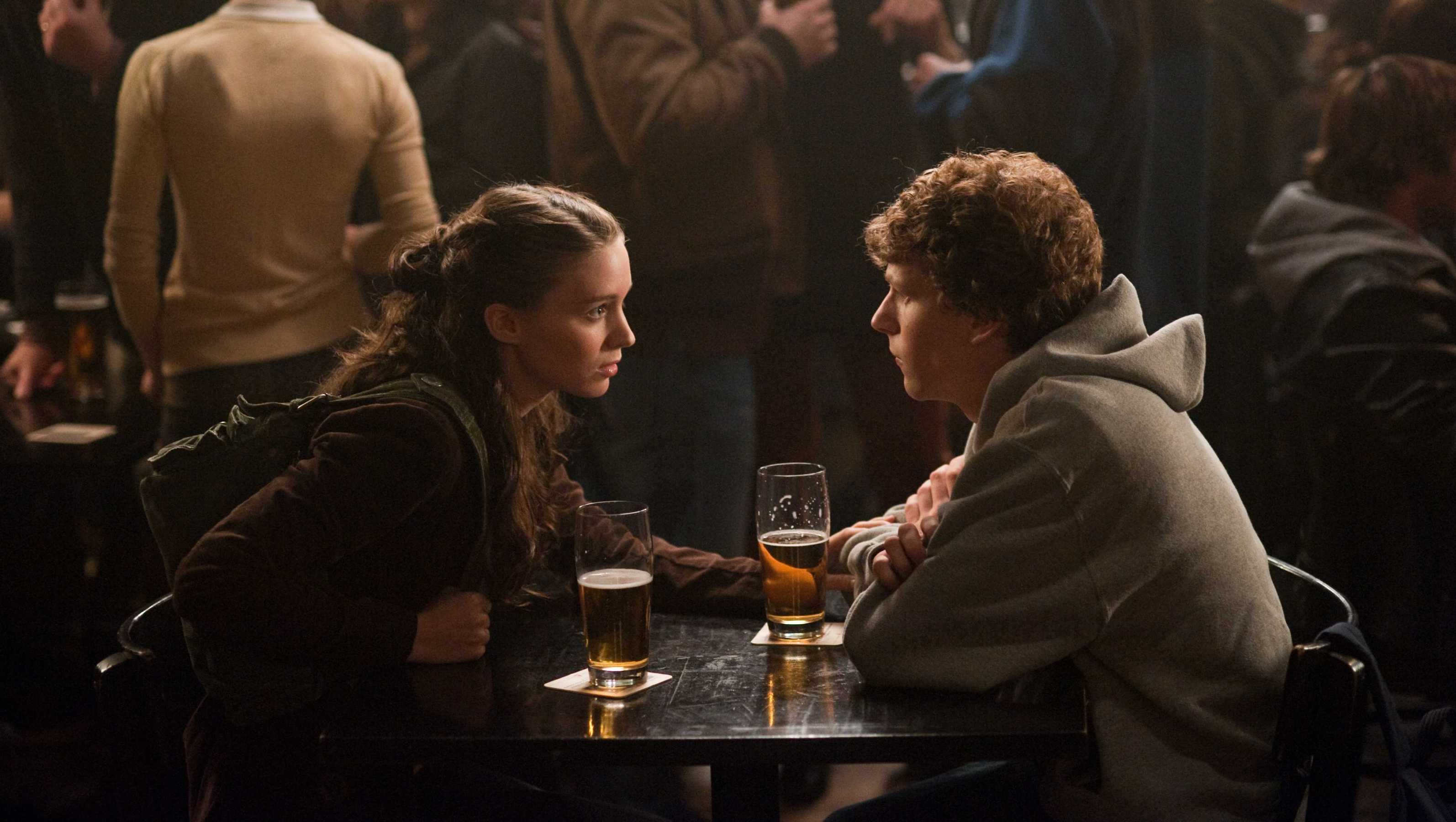
No one ever dreamt that a film about the funding of a social network would be this good. But with David Fincher directing and Aaron Sorkin writing the script, there was no way that “The Social Network” wouldn’t work out.
Breakups have always inspired great art, but in this opening, Mark Zuckerberg (Jesse Eisenberg) uses his breakup with Erica Albright (Rooney Mara) to create what will eventually become Facebook. The opening between the two where Erika dumps Mark takes Sorkin’s trademark dialogue to the next level.
It’s a simple conversation that’s anything but simple. A ridiculous number of things are said at lightning speed, where we learn everything we need to know about Mark and why Erika decides to call it quits. Even the most throwaway lines paint a bigger picture. Eisenberg and Mara give great performances in just a couple of minutes, with Mara doing the most with her limited screen time.
It’s the 21st century’s answers to the opening diner scene in “Pulp Fiction.” While completely different in every single way, we get to know the characters and what they stand for through simple conversation that ultimately leads off to the story at large. If you’re going to open your film with a conversation, then you can’t open better than this.
2. A Serious Man (2009)
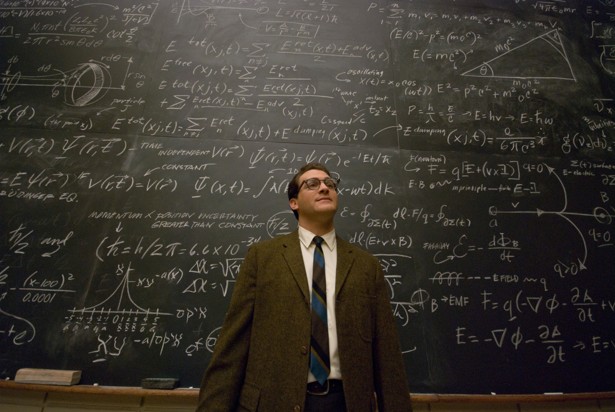
The Coen brothers have always known how to open a film. Sometimes it can be straightforward like in “Fargo,” odd like in “The Big Lebowski,” charming like in “Raising Arizona,” or just plain weird like here with “A Simple Man.” Whatever off-kilter method they choose, it always works out.
Opening with a prologue that seems to have no direct link with the rest of the film, a 19th century Jewish man has invited one Reb Groshkover over for soup after he helped him with his cart. However, the Jewish man’s wife tells him that Groshkover is dead and that the man he invited must be a dybbuk (wandering soul). They argue and quarrel over the matter until the creepy looking yet charming Groshkover shows up. To prove her suspicions, the wife stabs Groshkover in the chest with an ice pick. If he is a dybbuk, then he shouldn’t bleed, yet he eventually does and he exits into the night.
The rest of the film offers no obvious explanation to the creepy Yiddish folklore prologue. There are a few theories as to what exactly the opening means to the rest of the story: a family curse, foreshadowing, or nothing at all if you believe the brothers. But seeing as they mislead everyone with the “This is a true story” opening in “Fargo”,”no one will blame you if you don’t take their word for it.
Whatever the purpose or meaning of the prologue, it’s a fantastic way to open the film. It carries on the long tradition of the creative and different toned openings the brothers have become known for.
1. Inglourious Basterds (2009)
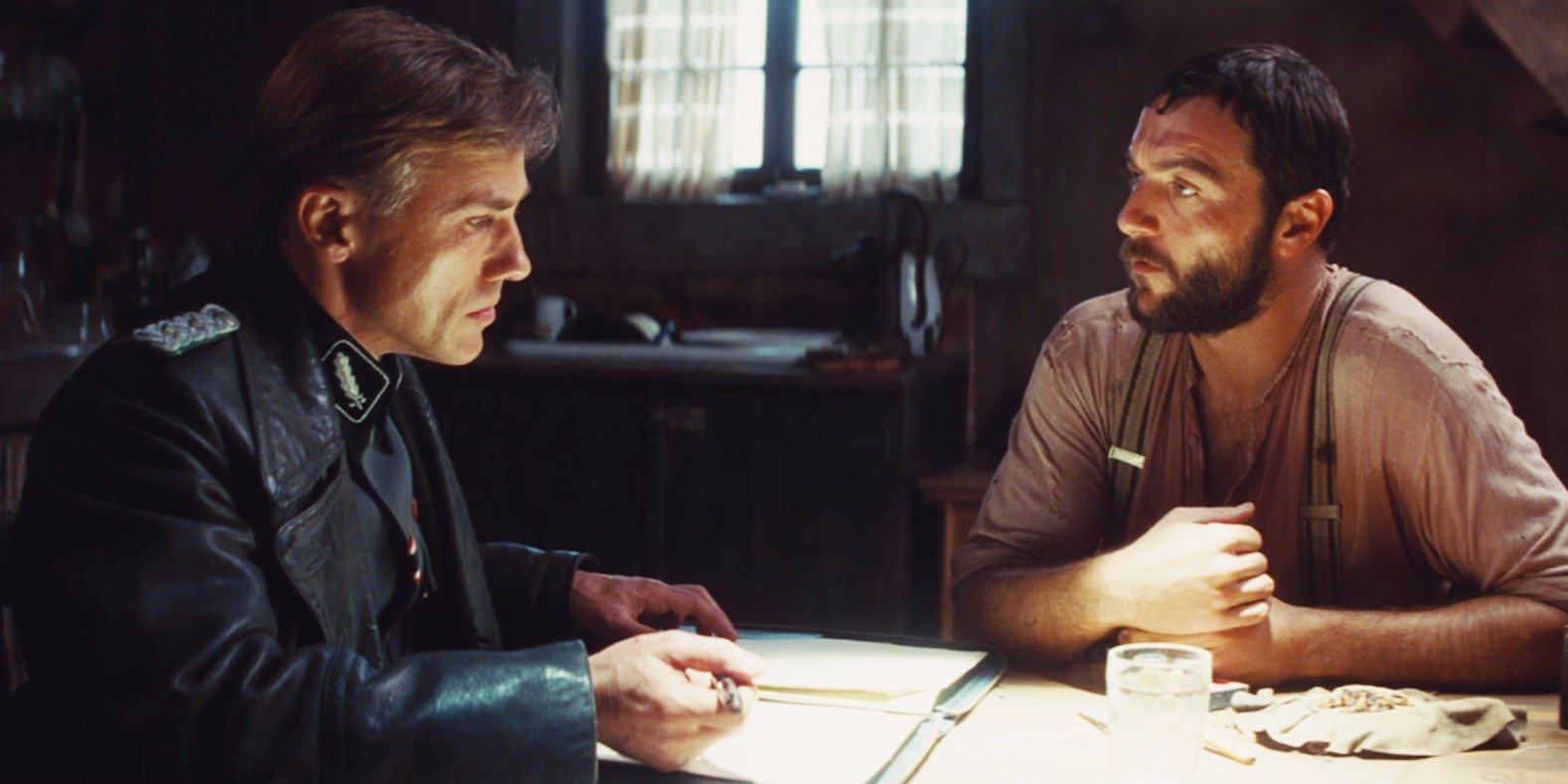
Quentin Tarantino’s alternative World War II film has one of the greatest openings in movie history. It’s perhaps the writer/director’s most heartwarming and tear-inducing scene. Steaming with various revenge plots against Hitler and the Nazis, it’s the opening that leaves the strongest impression.
French dairy farmer Perrier LaPadite (Denis Mènochet) gets interrogated by the smug Colonel Hans Landa (Christopher Waltz) for harboring a Jewish family. LaPadite knows that there’s nothing he can do but play along to Landa’s sick game. He’s hospitable and courteous and engages in small talk while subtly conveying his inner turmoil.
To save his own family, he has to sacrifice another. In a moving performance, Mènochet does a lot with his submissive role, and gives one of the most soulful performances in the entire film. Daresay the audience feels for him more than they feel for the helpless family that gets massacred.
Waltz, on the other hand, asserts his position as the film’s standout performance from this opening alone. He’s a character who’s always two steps ahead, and likes to play with his prey before he devours them. Tarantino and the actor toy with the audience at a leisurely pace that never loses its tension.
In just a few minutes, the opening scene features everything that’s great about Tarantino: the conversational dialogue, the reverting tension, the layered and cool characters, and of course, the violence.